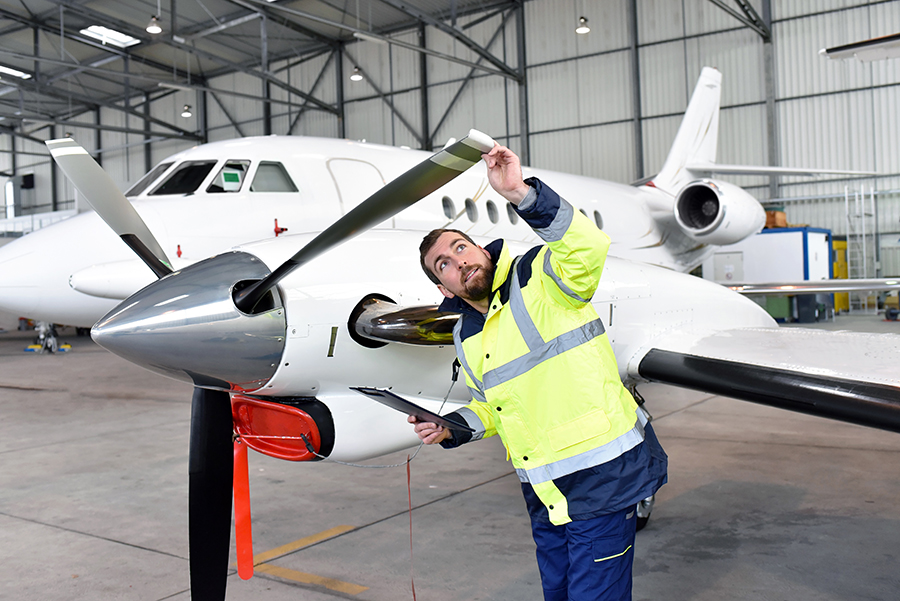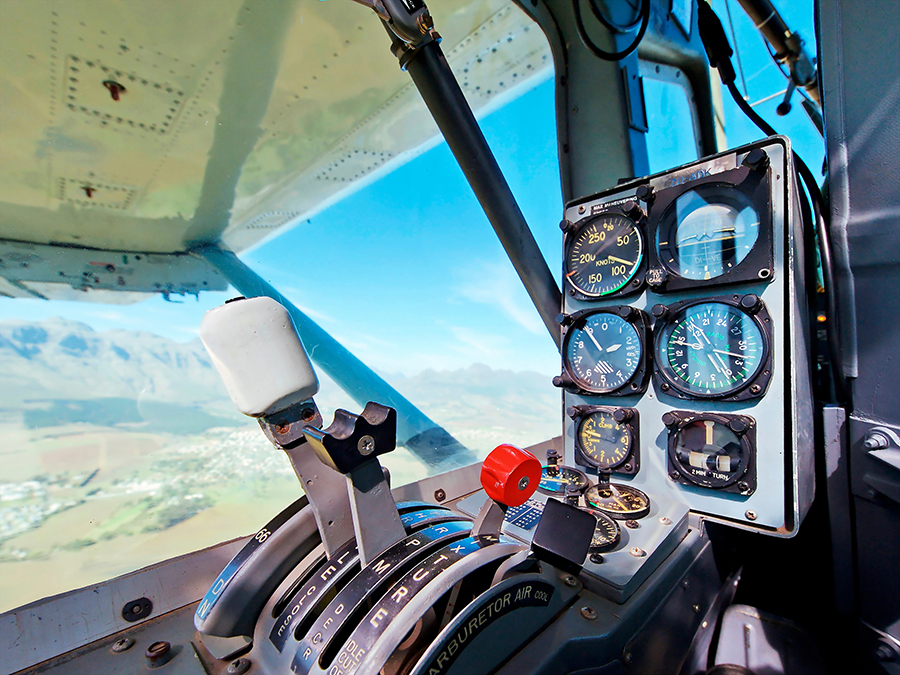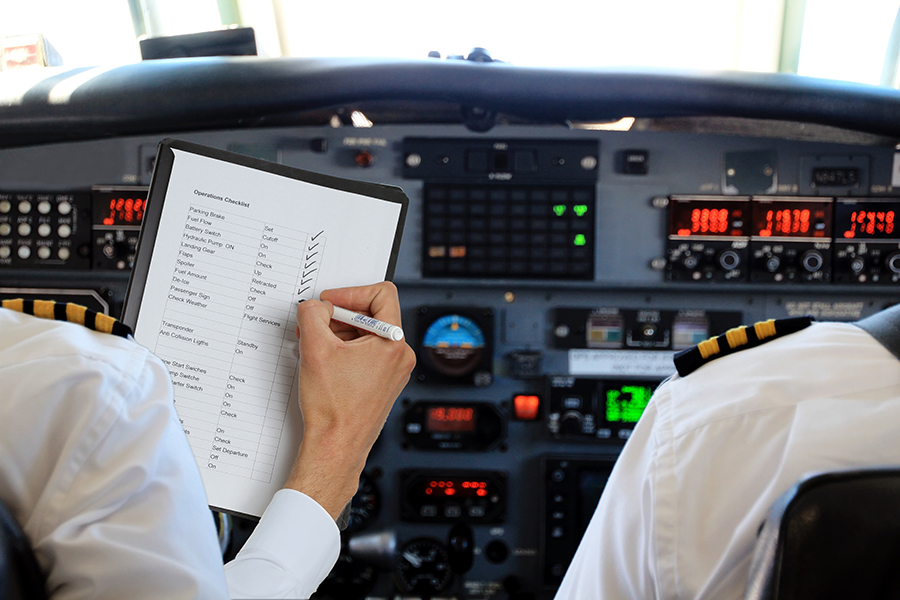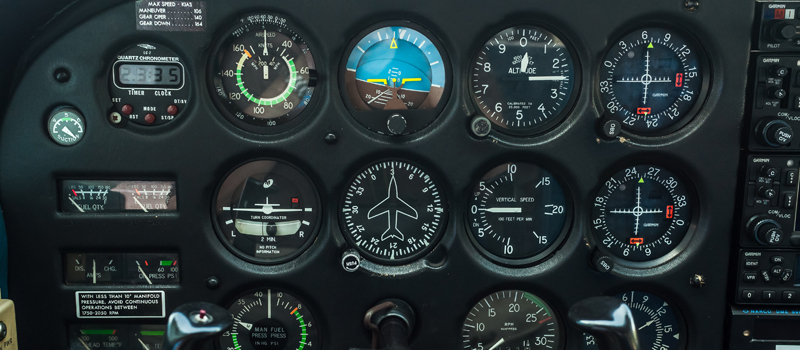-
AVIATES Defined
-
A - Annual Inspection
-
V – VOR Check
-
1 – 100 Hour Inspection
- Who Performs the Inspection
- When the Inspection is Performed
- What is Inspected
-
A – Altimeter + Airworthiness Directives
- Altimeter
- Airworthiness Directives (ADs)
-
T – Transponder
-
E – Electronic Location Transmitter (ELT)
-
S – Static Inspection
-
Conclusion
As a pilot, you should thoroughly understand the regulations and maintenance requirements that keep the aircraft airworthy and safe to operate.
One crucial aspect of aircraft maintenance is the periodic inspection and maintenance of various components, systems, and instruments.
This is where the AVIATES acronym comes into play.
AVIATES is an easy-to-remember acronym representing a checklist of key inspection and maintenance requirements for an aircraft. In other words, the AVIATES acronym is used to confirm that the aircraft has received the required maintenance and checks required for flight.
Whether you are a seasoned pilot or just starting out, understanding the AVIATES acronym and following its checklist can help you ensure that your aircraft is properly maintained and ready to fly.
AVIATES Defined
Here is what AVIATES stands for:
A – Annual Inspection (required every 12 calendar months)
V – VOR Check (required every 30 calendar days for IFR flight)
I – 100-Hour Inspection
A – Altimeter (required every 24 calendar months) + Airworthiness Directives
T – Transponder (required every 24 calendar months)
E – ELT Inspection (required every 12 calendar months)
S – Static System Inspection (required every 24 calendar months)
Let’s take a look at each item in detail.
A – Annual Inspection
The letter “A” in the AVIATES acronym stands for “Annual Inspection.”
The Annual Inspection is a comprehensive inspection of an aircraft performed by a certified mechanic with inspection authorization. As the name suggests, this inspection must be completed every 12 calendar months.
Once the Annual Inspection is complete, and any necessary repairs or maintenance tasks have been performed, the mechanic will sign off on the aircraft’s maintenance logbook, certifying that the inspection has been completed and that the aircraft is airworthy.
V – VOR Check
The letter “V” in the AVIATES acronym stands for VOR (VHF Omni-Directional Range).
VOR is a type of radio navigation system that is commonly used in aviation to help pilots navigate. The VOR system transmits radio signals from ground-based antennas to the aircraft, allowing the pilot to determine their position relative to the VOR station.
To ensure the accuracy and reliability of the VOR system, the FAA requires that all aircraft equipped with VOR navigation equipment undergo a periodic VOR check. A pilot or mechanic must perform this check every 30 calendar days if the aircraft operates under Instrument Flight Rules (IFR).
There are a few ways to perform this VOR check:
- Using a VOT Signal, which is a VOR test signal located at some airports.
- Using a VOR checkpoint at an airport.
- Using two VORs on the aircraft to crosscheck their indications.
- Checking a VOR in flight.
1 – 100 Hour Inspection
The letter “I” in the AVIATES acronym represents the number “1,” an abbreviation of “100-hour inspection.”
100-hour inspections and annual inspections are often mistaken for one another. While both are similar regarding their purpose (to inspect the aircraft and ensure airworthiness), there are three primary differences between the two:
Who Performs the Inspection

Only certified mechanics with inspection authorization can perform annual inspections, but no inspection authorization is required to complete a 100-hour inspection.
When the Inspection is Performed
100-hour inspections are performed every 100 hours of flight time, whereas annual inspections are only performed every 12 calendar months.
What is Inspected
A 100-hour inspection is less detailed than an annual inspection and typically involves components that need regular maintenance.
A – Altimeter + Airworthiness Directives
The letter “A” in the AVIATES acronym represents two critical items related to aircraft maintenance: Altimeter and Airworthiness Directives.
Altimeter

The altimeter is a critical instrument that provides altitude information to the pilot, and it must be periodically inspected to ensure its accuracy.
The altimeter inspection must be performed every 24 calendar months by a certified mechanic and involves checking the accuracy of the altimeter against a known altitude source.
Airworthiness Directives (ADs)
Airworthiness Directives (ADs) are notices issued by the FAA to owners and operators of aircraft that identify and require correction of a potentially unsafe condition. ADs are issued when the FAA determines that a component or system of a particular aircraft does not meet the minimum safety standards outlined in the Federal Aviation Regulations (FARs).
Compliance with ADs is mandatory for all aircraft owners and operators. Failure to comply with ADs can result in the grounding of the aircraft and the revocation of the aircraft’s airworthiness certificate.
T – Transponder
The letter “T” in the AVIATES acronym stands for the transponder, an electronic device that transmits data such as position and altitude, allowing Air Traffic Control (ATC) to issue guidance and instructions.
To ensure that a transponder is functioning correctly and transmitting accurate information, it must undergo an inspection every 24 calendar months. This inspection must be performed by a certified mechanic and involves testing the transponder’s accuracy, functionality, and encoding capabilities.
E – Electronic Location Transmitter (ELT)
The letter “E” in the AVIATES acronym stands for Electronic Location Transmitter (ELT).
The ELT is a device designed to transmit a distress signal in the event of an accident. The signal can be received by search and rescue personnel, who can use the signal to locate the aircraft and initiate a rescue operation.
The ELT must be inspected every 12 calendar months to ensure proper installation and operation.
The batteries utilized in ELTs must be either replaced or recharged when:
- The transmitter has been utilized for over one hour in total.
- The batteries have reached 50% of their useful life or, in the case of rechargeable batteries, 50% of the useful life of the charge has expired.
S – Static Inspection
The letter “S” in the AVIATES acronym stands for Static System Inspection.
The static system in an aircraft is a network of tubes and sensors that provide the air pressure readings used by the altimeter and airspeed indicators.
A certified mechanic must inspect this system every 24 calendar months.
Conclusion
As with all aspects of aviation, it is crucial to prioritize safety and compliance with regulations to ensure that you and your passengers remain safe and secure during flight.
The AVIATES acronym should be used as another tool in your toolbelt to help you achieve this and become a better, safer pilot.




